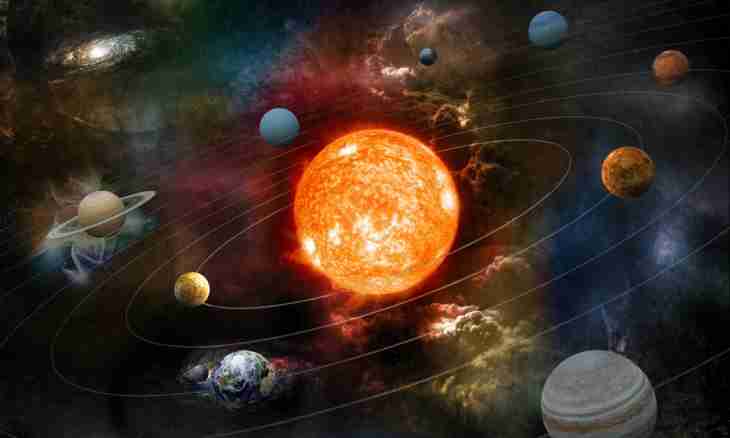Planets of the solar system are divided into two main groups – external and internal. External planets include in the structure 4 celestial bodies – the Neptune, Uranium, Saturn and Jupiter. All of them are gas giants, consist of light chemical elements – hydrogen, helium and oxygen. Internal planets consist also of 4 bodies – Mars, Earth, Venus and Mercury. These planets of the small size, are put from stone and solid bark.
Mercury
The next to the Sun and the smallest planet of a system, only 0.055% of Earth size. 80% of its weight are the iron center. The kamenist surface, is cut up by craters and funnels. The atmosphere is strongly rarefied, consists of carbon dioxide. Temperature of sunny side is +500os, a reverse side - 120 wasps. There is no gravitational and magnetic field on Mercury.
Venus
Venus possesses very dense atmosphere consisting of carbon dioxide. Temperature of a surface reaches 450 OS that is explained by constant greenhouse effect, pressure about 90 Atm. The size of Venus equals 0.815 sizes of Earth. The kernel of the planet is put from iron. On a surface there is a small amount of water and also a set of the methane seas. Venus has no satellites.
Mother Earth
The only planet in the Universe on which there is life. Nearly 70% of a surface are covered with water. The atmosphere consists of complex mix of oxygen, nitrogen, carbonic and inert gases. Gravitation of the planet has ideal size. If it is smaller – oxygen would depart to space if bigger – hydrogen gathers for surfaces, and life could not exist.
If to increase distance from Earth to the Sun by 1% - oceans will freeze if to reduce by 5% - will boil.
Mars
Because of high content of oxide of iron in soil, Mars has brightly red color. Its size is 10 times smaller, than terrestrial. The atmosphere consists of carbon dioxide. The surface is covered with craters and extinct volcanoes, the highest of which Olympe, its height is 21.2 km.
Floodlight
The greatest of planets of the Solar system. More largely than Earth by 318 times. Consists of mix of helium and hydrogen. Inside Jupiter razzharen and therefore in its atmosphere vortex structures prevail. Has 65 known satellites.
Saturn
The structure of the planet is similar to Jupiter, but first of all, Saturn is known thanks to the system of rings. Saturn is 95 times larger than Earth, but its density the smallest among all planets of the Solar system. Its density is equated to water density. Has 62 known satellites.
Uranium
Uranium is larger than Earth by 14 times. It is unique the rotation "on one side". The inclination of its axis of rotation equals 98 lakes. The Uranium kernel very cold as gives all heat to space. Has 27 satellites.
Neptune
More largely than Earth by 17 times. Radiates a large amount of heat. Shows low geological activity, on its surface there are geysers from liquid nitrogen. Has 13 satellites. The planet is accompanied so by invited "Neptunsky Trojans" who are bodies of asteroid character.
The atmosphere of the Neptune contains a large amount of methane, it gives it characteristic blue color.
Features of planets of the Solar system
Distinctive feature of planets of the Solar system is the fact of their rotation not only around the Sun, but also on the axis. Also all planets to a greater or lesser extent are warm celestial bodies.

